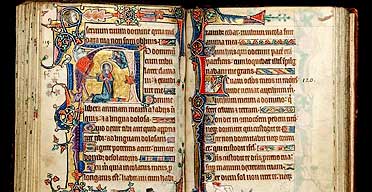Facts About Macclesfield Psalter
The Macclesfield Psalter is a stunningly adorned manuscript, believed to have been created between 1320 and 1330 in East Anglia. With 252 illustrated pages, this masterpiece is named after its most recent owner—the Earl of Macclesfield. It was discovered at Shirburn Castle and later auctioned at Sotheby's in 2004. Initially, the Getty Museum in Malibu, California, won the bid at £1.7 million, outbidding the Fitzwilliam Museum in Cambridge. However, thanks to funding from the UK Government's National Heritage Memorial Fund, the Fitzwilliam Museum eventually acquired the Psalter. Since 2008, it has been restored and displayed there.
This Psalter is part of the East Anglian manuscript tradition and was likely crafted for private devotion rather than church use. Its pages are adorned with elaborate illuminations, including full-page miniatures, gilded initials, and detailed religious scenes. The manuscript is renowned for its lavish artwork, featuring not only intricate religious imagery but also whimsical decorations like grotesques and drolleries. Experts believe that multiple artists contributed to its creation, with at least two assistants involved in the process.
The original patron of the Psalter remains a mystery, as the coat of arms that might have identified them has been removed. Some speculate that the owner could have been John de Warenne, the 7th Earl of Surrey, or perhaps a Dominican friar depicted within its pages. Regardless of its original owner, the Psalter's rich imagery and intricate design make it a remarkable example of medieval manuscript art.

 Ireland
Ireland